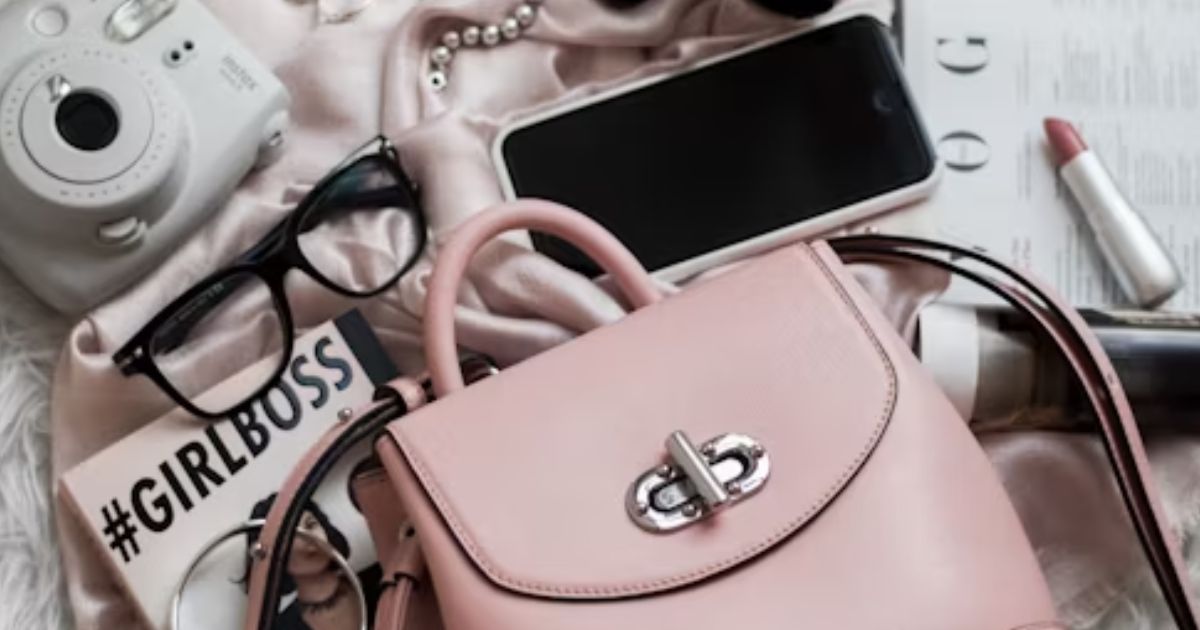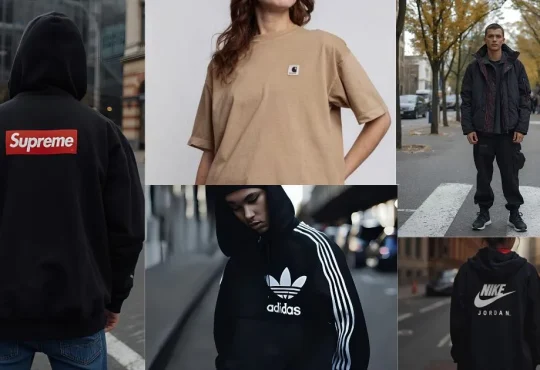
In recent years, the worlds of fashion and technology have been colliding in increasingly exciting and innovative ways. While the fashion industry has always been synonymous with creativity and design, the infusion of cutting-edge technology is opening new doors for groundbreaking collaborations. From bright fabrics to virtual reality shopping experiences, tech has introduced fresh possibilities that are shaping the future of fashion in dynamic ways. Iconic fashion houses, cutting-edge tech companies, and ambitious startups are driving a new era of style through collaborations that merge creativity with innovation. These partnerships are transforming both the design of clothing and the ways fashion is experienced and engaged with.
The rise of fashion-tech collabs is reshaping the industry, introducing groundbreaking innovations that are transforming everything from clothing designs to shopping experiences and brand interactions. Key advancements, including wearable technology, AI-driven fashion, and the integration of blockchain for increased transparency, are revolutionizing the way fashion is created, consumed, and experienced. These partnerships are marking the beginning of a new era where fashion and technology converge to redefine industry standards.
The Evolution of Fashion and Tech Collaborations
Fashion and technology are not two industries typically associated with one another. Historically, fashion has been viewed as a creative pursuit rooted in tradition and craftsmanship, whereas technology has been regarded as a highly functional and digital domain. However, over the past decade, there has been a dramatic shift, with the tech world playing an increasingly prominent role in shaping the fashion landscape.
1. The Rise of Wearable Technology
One of the most significant developments in the intersection of fashion and technology has been the rise of wearable tech. While fitness trackers like Fitbit were among the first mainstream examples of wearable technology, the past few years have seen a significant expansion of this market, with fashion brands partnering with tech companies to create devices that combine function with style. The concept of “fashion meets tech” is no longer limited to the world of smartwatches and fitness trackers. Today’s fashion landscape features innovations such as heated jackets, smart shoes, and garments that can change color or adjust their fit, seamlessly blending style with advanced functionality.
- Bright Fabrics and Textiles: One of the most exciting innovations in wearable tech has been the development of innovative fabrics. These textiles feature built-in sensors that can interact with the wearer’s body, monitor health metrics, or respond to environmental conditions. Brands like Ralph Lauren have partnered with tech companies to incorporate these fabrics into their designs, such as the PoloTech shirt, which tracks biometric data and syncs with an app to provide real-time feedback.
- Wearable Accessories: Wearable technology is also being infused into tech accessories.Accessories: Wearable tech is making its mark beyond clothing, seamlessly integrating into items like jewelry, bags, and shoes for a stylish blend of form and function. Apple has long dominated the wearable tech space with its Apple Watch. Still, fashion brands like Hermès have teamed up with the tech giant to create luxury smartwatch bands that bring high-end design to wearable technology. Meanwhile, Google has collaborated with fashion brands like Levi’s to develop the Jacquard jacket, which enables users to control their phone, navigate directions, and even answer calls with simple gestures on their jacket sleeves.
2. Key Collaborations Between Fashion and Tech Giants
Some of the most exciting and innovative products in the fashion-tech space have come from collaborations between major fashion houses and tech companies. These partnerships combine cutting-edge technology with luxurious design, offering consumers products that are not only stylish but also functional. Here are a few notable collaborations that have left a lasting impact on the industry.
- Balenciaga x Tesla: When luxury fashion house Balenciaga teamed up with electric car manufacturer Tesla, it wasn’t just about creating stylish pieces—there was also a focus on sustainability. Balenciaga has long been at the forefront of high fashion, and with Tesla’s commitment to innovation and sustainability, this collaboration made perfect sense. One of the standout pieces was the Tesla x Balenciaga jacket, crafted from sustainable materials and featuring sleek, futuristic lines that paid homage to the tech-forward designs for which Tesla is known. The partnership also aimed to promote eco-conscious fashion, focusing on incorporating fashionable and sustainable materials into its designs. This collaboration was a prime example of how tech companies and fashion brands are merging their expertise to create innovative and responsible fashion.
- Adidas x Parley for the Oceans: While not strictly a “tech” collaboration in the traditional sense, Adidas’ partnership with Parley for the Oceans has incorporated technology to address a significant issue in the fashion industry: ocean pollution. Through the use of high-tech materials made from recycled ocean plastics, Adidas has developed a range of shoes and apparel that seamlessly blend style with a message of environmental responsibility. The collaboration employs a range of innovative techniques to transform ocean plastic waste into a new resource for production, showcasing how technology can be leveraged to address environmental challenges within the fashion industry. This partnership also explores how technology and fashion can be integrated for the greater social good, as it helps raise awareness of plastic waste and the importance of sustainable materials in the creation of everyday products.
- Louis Vuitton x Riot Games: The convergence of fashion and tech is also reaching new heights within the world of gaming and esports. Louis Vuitton’s partnership with Riot Games for the League of Legends World Championship is one of the first times a luxury fashion brand has delved deep into the world of esports. Louis Vuitton created custom-designed travel bags for the players and a special trophy case; however, what made this collaboration truly unique was its integration into the virtual world of League of Legends. The partnership allowed physical fashion items to be integrated into esports and extended into the digital space. Players’ avatars were given custom-designed virtual outfits, allowing the fashion brand to merge high-end couture with the growing realm of online gaming.
3. The Impact of Artificial Intelligence (AI) on Fashion Design
Artificial Intelligence is swiftly emerging as a driving force in the fusion of fashion and technology, powering everything from personalized shopping experiences to predictive design and innovative inventory management. AI is helping designers and brands streamline their creative processes, enhance personalization, and make more informed decisions about trends, sizing, and production. Here’s a deeper look into how AI is transforming the fashion industry.
AI-Driven Fashion Design: Designers are leveraging AI platforms like IBM Watson to decode trends, anticipate consumer preferences, and craft collections that align more closely with their audiences’ wants, making fashion smarter, not just trendier. AI can process vast amounts of data, such as customer feedback, sales trends, and social media buzz, to generate designs that are not only trendy but also aligned with consumer preferences.
Fashion houses like H&M and Zara are already utilizing AI to analyze customer behavior, which enables them to optimize their inventory and design new collections based on real-time demand. Additionally, AI is encouraging the development of sustainable and efficient production processes, allowing fashion brands to create collections that are not only stylish but also more environmentally friendly.
Personalized Shopping Experiences: AI is also helping enhance customers’ shopping experiences, making them more personalized and tailored to individual preferences. Platforms like Stitch Fix have utilized AI to create customized shopping recommendations for customers, leveraging data from previous purchases, preferences, and even body measurements to suggest styles that are likely to fit well. Similarly, augmented reality (AR) apps are enabling customers to try on clothes virtually, enhancing online shopping experiences.
The Future of Fashion-Tech Collabs
As technology continues to evolve, so too will the possibilities for fashion and tech collaborations. The next few years will undoubtedly bring even more exciting innovations that bridge the gap between style and function. Here are a few areas to watch in the future of fashion-tech collaborations.
Virtual Fashion and the Metaverse: With the rise of virtual worlds and the metaverse, fashion is evolving into a digital experience, extending beyond physical garments to include virtual expression and identity. Digital-only fashion is gaining traction, with brands like Balenciaga and Gucci already creating virtual outfits for avatars. The metaverse offers a new platform for designers to express their creativity without the constraints of physical materials, enabling even more imaginative and experimental designs. Expect to see more fashion brands creating exclusive digital clothing collections that can be worn in virtual spaces.
3D-Printed Fashion: 3D printing is poised to transform fashion production and consumption by enabling the creation of customizable, made-to-order garments. Designers such as Iris van Herpen have already integrated 3D-printed elements into their collections, and as the technology becomes more widespread, entire outfits crafted through this method are expected to emerge, offering a new level of personalization and innovation in fashion design.
Blockchain and Fashion Transparency: Blockchain technology is poised to play a growing role in promoting transparency and ethical practices within the fashion industry. By utilizing blockchain, brands can track the journey of their products—from raw materials to finished goods—ensuring that every item is produced ethically and sustainably. This could lead to a new wave of consumer trust, with shoppers able to verify the authenticity and sustainability of their purchases.
A Fusion of Style and Innovation
The fusion of fashion and technology is transforming the industry in profound ways. From bright fabrics and cutting-edge accessories to AI-driven collections, the intersection of style and innovation is redefining clothing as more than just material—it’s becoming a functional, sustainable, and interactive medium for self-expression. As technological advancements continue, the fashion world is on the verge of a new era marked by limitless creativity and opportunity. With innovations such as digital wardrobes, personalized shopping experiences, and eco-friendly solutions, the potential of this collaboration is only just beginning to unfold.




